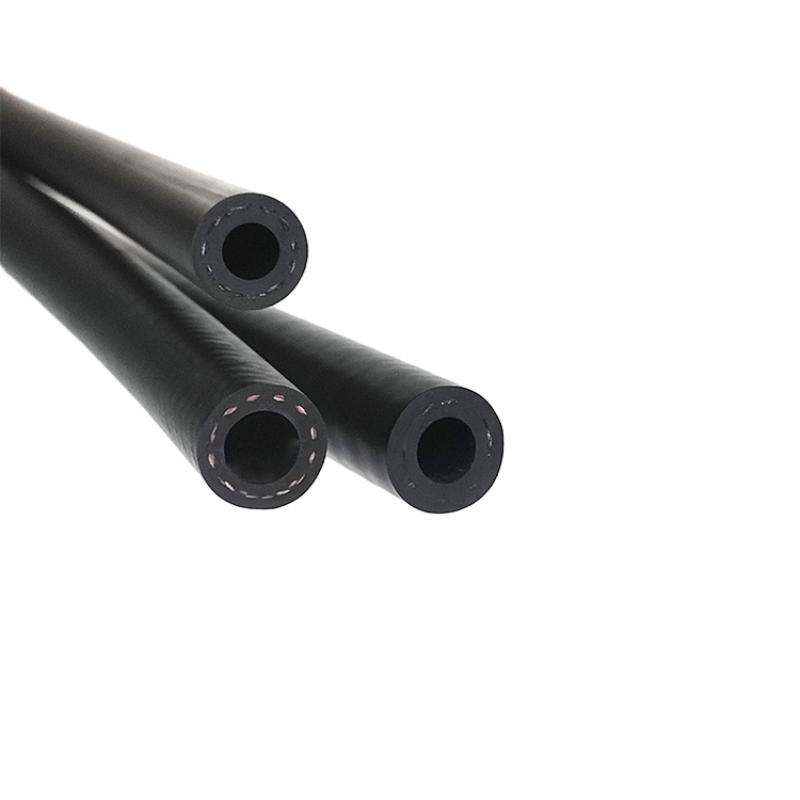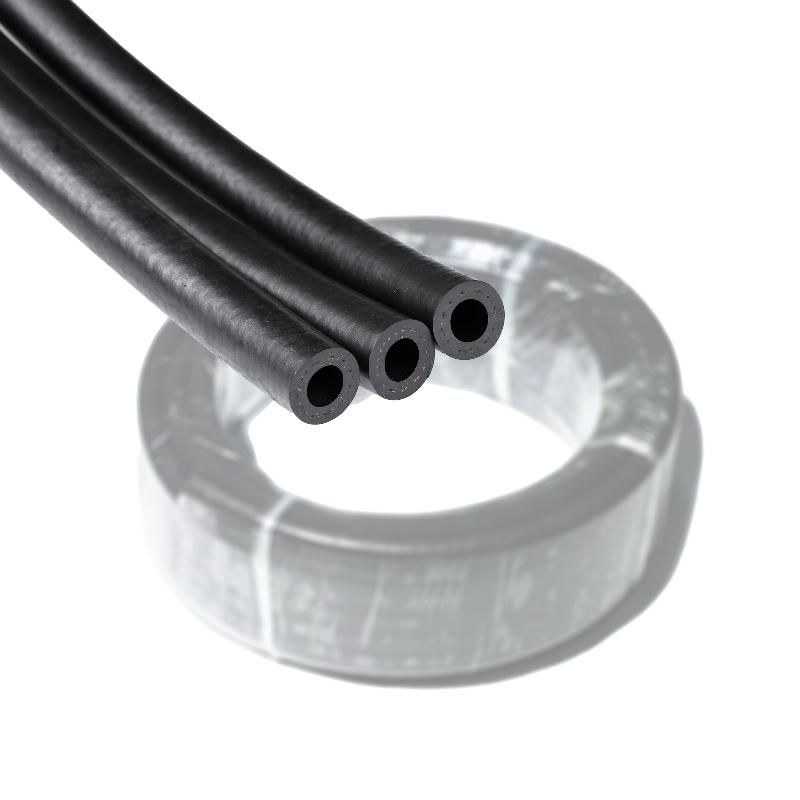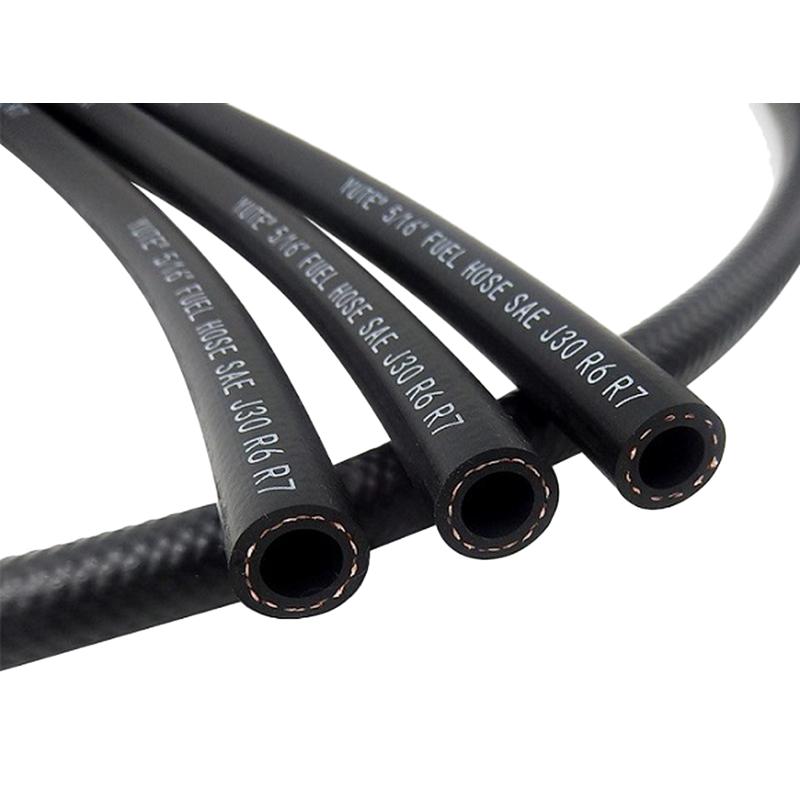High-Quality Automotive Fuel Line for Cars & E85 Applications
Hul . 26, 2025 04:01 Back to list
High-Quality Automotive Fuel Line for Cars & E85 Applications
Website: https://www.kemohose.com
Email: sales@kemohose.com | Phone: +86 13930969270
Address: Niu Jiazhai Industrial Area, Changzhuang Town, Wei County, Hebei Province, China





Overview: The Critical Role of automotive fuel line Technology
In the world of automotive engineering, the automotive fuel line is a key component in ensuring safe, efficient, and regulated fuel transfer from the tank to the engine. Its evolution mirrors advancements in vehicle technology, fuel blends—such as E85, diesel, and synthetic fuels—and ever-tightening industry standards. This article explores the latest industry trends, technical parameters, application scenes, and gives an in-depth look at Fuel Hose SAE J30R6/R7 by HEBEI KEMO AUTO PARTS TECHNOLOGY CO., LTD, a leading global supplier.
Industry Trends: Safety, Compatibility, and Regulation
- Material Evolution: A shift from metal lines to high-quality synthetic rubber and multi-layered composites for flexibility and corrosion resistance.
- Compatibility with Alternative Fuels: Modern automotive fuel lines must withstand ethanol (E85), biodiesel, and low-sulfur diesel fuel blends [SAE Technical Papers].
- Global Standards: Adherence to SAE J30, DIN 73379, and ISO/TS 16949 guarantees universal fit and safety.
- Environmental Focus: Lower permeability and eco-friendly manufacturing seize the spotlight.
- Rising Aftermarket Demand: According to MarketsandMarkets, the automotive fuel lines market is projected to reach $10.2B by 2030 at a CAGR of 4.7%.
Technical Specifications: Automotive Fuel Lines at a Glance
| Parameter | Typical Value / Range | Industry Standard | Notes |
|---|---|---|---|
| Material | NBR, FKM, CSM, PTFE, EPDM | SAE J30R6/R7 | Resistant to diverse fuel blends |
| Temperature Range | -40℃ ~ +150℃ | SAE J30R6 | Sustains extreme cold/hot climates |
| Pressure Rating | 0.5 MPa ~ 1.5 MPa | SAE & OEM specs | Depends on application & reinforcement |
| Inner Diameter | 3mm ~ 19mm | DIN 73379 | Customized on vehicle model |
| Compatibility | Gasoline, Diesel, E85, Biofuels | ISO/TS 16949 | Covers car fuel lines, e85 fuel line etc. |
Data Visualization: Trends & Technical Insights
Product Focus: Fuel Hose SAE J30R6/R7
- Temperature: -40℃ ~ +150℃ (-40°F ~ +300°F)
- Tube: NBR synthetic rubber
- Reinforcement: High tensile braided
- Cover: NBR and environmental resistant synthetic rubber
- Certificate: ISO/TS 16949:2009
- Standard: SAE J 30R6/R7, DIN 73379 Type 2A
- Application: Gasoline Engine, Diesel Engine, Mechanical Lubrication System
- For more technical details visit: Fuel Hose SAE J30R6/R7 Product Page
Applications: Where Quality Matters
- Passenger Cars & Light Trucks – Car fuel lines face constant vibration and wide temperature flux; reliability is key.
- Commercial Vehicles & Agricultural Machinery – Diesel fuel hose and fuel hose diesel are engineered for higher pressures and aggressive fuel blends.
- Performance Vehicles & Flex-Fuel Cars – E85 fuel hose, e85 fuel line require state-of-the-art materials to resist ethanol corrosion and pressure spikes.
- Aftermarket & Maintenance – Universal automotive fuel line applications enable easy replacement and upgrades.
Why Select HEBEI KEMO AUTO PARTS TECHNOLOGY CO., LTD?
- Expertise: Over 15 years designing automotive fuel lines for OEM and aftermarket industries globally.
- Authoritativeness: Certified by ISO/TS 16949, full compliance with SAE and DIN standards.
- Trustworthiness: Products rigorously tested for permeability, burst, bend, and compatibility, with published test reports.
- Innovation: Continuous R&D partnership with global automotive OEMs and institutions.
- Customer-Centric: Fast, reliable shipments worldwide and custom engineering service.
Professional FAQ: Understanding Fuel Line Specs and Standards
- Q1: What is NBR, and why is it preferred for automotive fuel line tubes?
- NBR (Nitrile Butadiene Rubber) offers superb fuel, oil, and temperature resistance. Its flexibility and cost-effectiveness make it the go-to material for car fuel lines and fuel hose diesel applications.
- Q2: How does SAE J30R6/R7 standard benefit end-users?
- These SAE specifications guarantee that the hose withstands specific pressures, temperature ranges, and chemical exposures. This ensures safety, mechanical integrity, and compatibility with various fuels.
- Q3: What is the advantage of high tensile braiding in diesel fuel hose construction?
- High tensile braiding increases pressure resistance and burst safety, making it essential for diesel and high-performance E85 fuel line setups.
- Q4: How do environmental-resistant covers improve product life?
- Synthetic covers protect from weathering, UV, ozone, and fuel vapors, extending the hose’s operational life in harsh under-hood conditions.
- Q5: When should E85 fuel hose be selected?
- Use E85-specific hoses if the vehicle runs on ethanol blends above 15% (E15+). E85 can degrade normal hoses; specialized lines are crucial for longevity and reliability [AA1Car].
- Q6: What is ISO/TS 16949:2009 certification?
- It’s a global quality management standard for the automotive supply chain. Only audited suppliers like KEMO Hose are compliant.
- Q7: What does DIN 73379 Type 2A mean for fuel hose specifications?
- It references a European standard requiring strict dimensional, permeability, and heat-resistance tests, relevant for modern diesel fuel hose products.
Conclusion & Industry References
The automotive fuel line market is rapidly evolving, driven by the adoption of alternative fuels, stringent safety standards, and innovative material science. Fuel Hose SAE J30R6/R7 from HEBEI KEMO AUTO PARTS TECHNOLOGY CO., LTD exemplifies the current peak in durability, compatibility, and regulatory compliance. For technical advice, custom solutions, or more info, contact us at sales@kemohose.com or call +86 13930969270.
References:
• MarketsandMarkets: Global Automotive Fuel Lines Market Report
• SAE Technical Papers: Performance of Fuel System Materials
• AA1CAR: Automotive Fuel Line Materials & Issues
• ScienceDirect: Overview of Automotive Fuel Lines
This is the last article
Latest news
-
High-Quality Automotive Fuel Line for Cars & E85 Applications
NewsJul.26,2025
-
Fuel Hose SAE J30R9 - High Pressure, Durable, Low Permeation
NewsJul.25,2025
-
Durable Air Conditioner Hose for Car – High Pressure, Easy Installation
NewsJul.24,2025
-
Durable Air Conditioner Hose Car – High Pressure & Recharge Solutions
NewsJul.23,2025
-
High-Performance Refrigeration Hose for Efficient Cooling Systems
NewsJul.22,2025
-
Premium Air Conditioner Hose Car - High Pressure Line
NewsJul.22,2025
